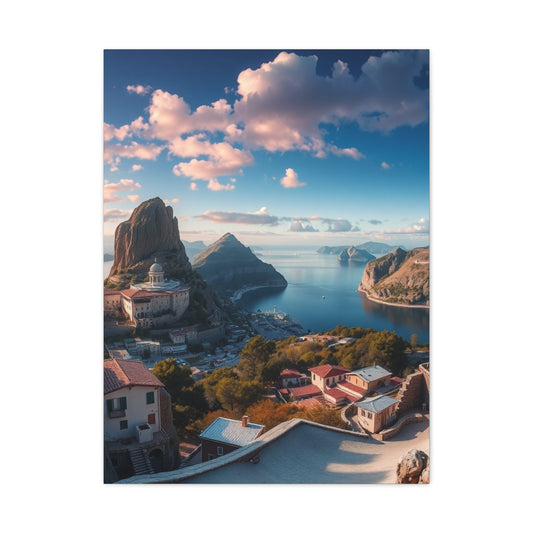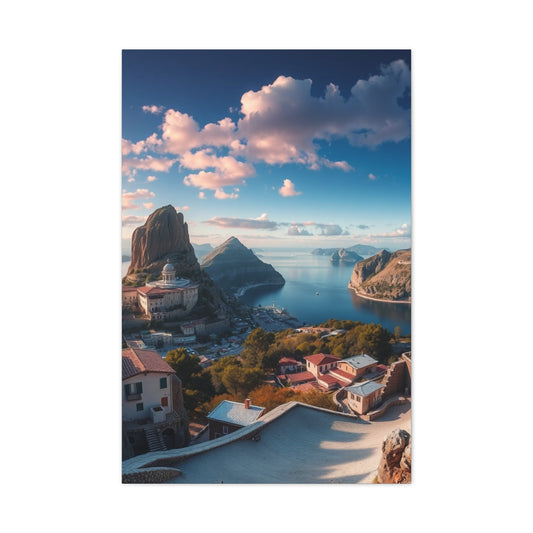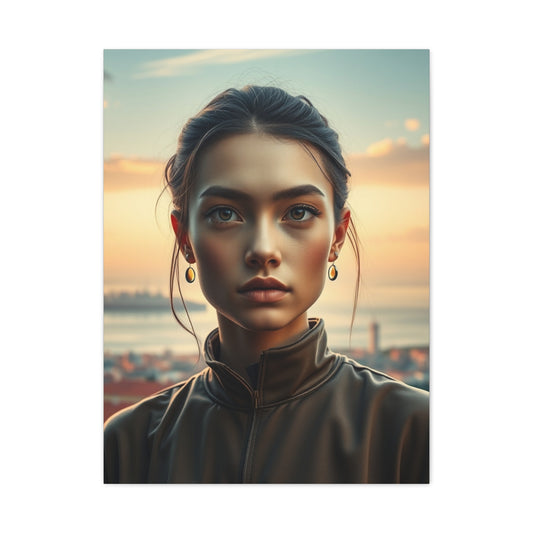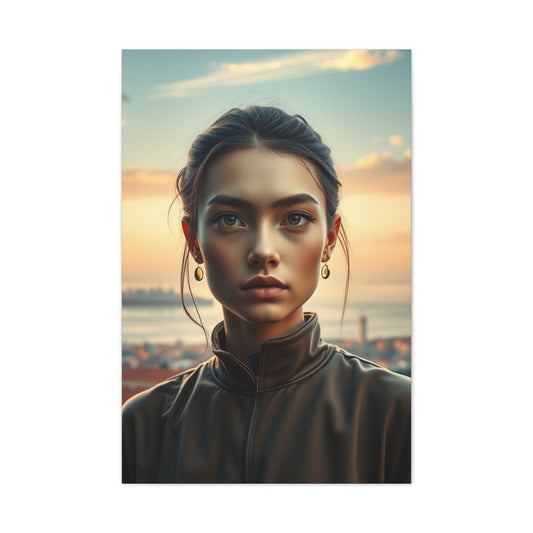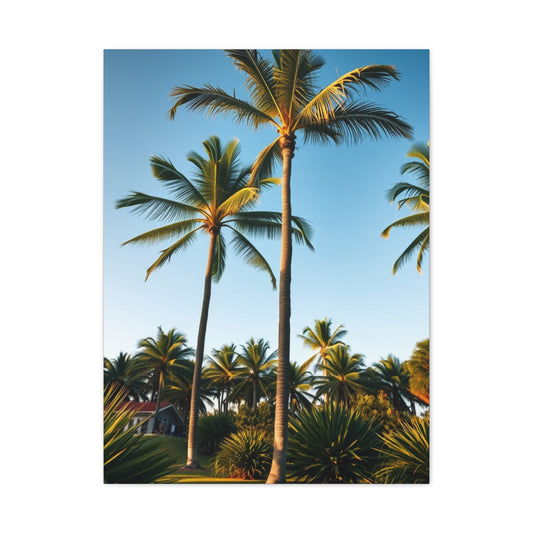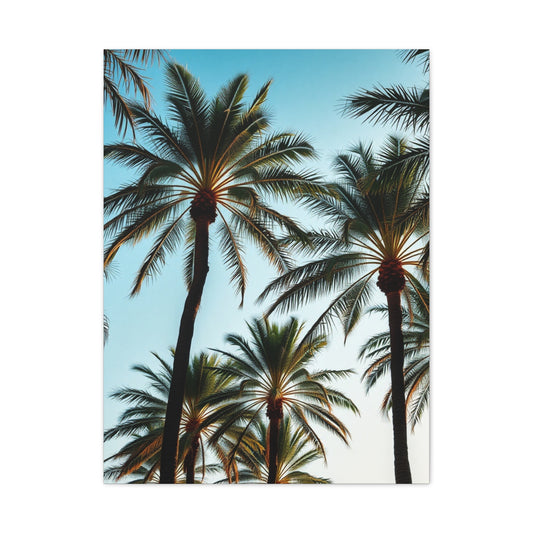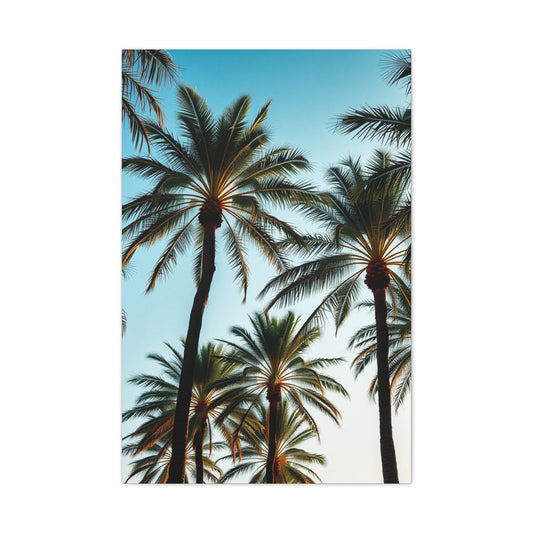Photography is as much about seeing the world differently as it is about capturing what is in front of you. Over time, photographers often fall into routines, taking similar shots in familiar locations, with repetitive subjects and predictable compositions. The One Color Photo Game is designed to shake up that routine, ignite creativity, and sharpen your observational skills. At its core, this exercise is simple yet challenging: choose a single color and create a series of photographs that focus exclusively on that color, exploring its shades, tints, and textures, without allowing any other colors to appear. Despite the simplicity of the concept, the exercise opens doors to new perspectives, encourages experimentation, and strengthens your ability to see the visual world in detail.
The game is accessible to photographers of all experience levels. You don’t need a professional camera or advanced technical knowledge. Even a smartphone can produce compelling images if approached with intention. The purpose of the exercise is not technical perfection but the practice of looking more closely, thinking creatively, and composing images with intention. By limiting your focus to one color, your attention is drawn to details that might otherwise go unnoticed: subtle variations in tone, the way light falls across surfaces, textures, patterns, and the composition of forms within the frame. You begin to see the world not just in shapes and subjects, but in color as a primary element of design.
Choosing a color is the first step and can influence the challenge and creative opportunities. Beginners may find it easier to start with broad, easily identifiable colors such as red, blue, or green. More experienced photographers might choose unusual or nuanced colors like lavender, teal, or ochre to increase the difficulty and encourage more inventive thinking. The color you select becomes the lens through which you observe your environment. Every object, surface, and reflection must be analyzed in terms of whether it fits your chosen hue. This deliberate observation encourages mindfulness, patience, and creativity. You will notice small details that usually pass unnoticed: a shadow casting a darker tint, a worn texture in a paint surface, or the subtle variation in leaves under sunlight.
The challenge of excluding other colors adds another layer of difficulty. Many everyday scenes are full of multiple colors, and adhering strictly to a single color requires discipline and problem-solving. You might have to shift your position, zoom in, or adjust the angle of your camera to isolate the color effectively. Sometimes the solution will be found in abstract compositions, where shapes, lines, and textures dominate and the color itself becomes the primary subject. This encourages a form of creative thinking that goes beyond conventional photography. It teaches you to see objects not just as items, but as elements of a larger visual puzzle, emphasizing harmony, contrast, and repetition in ways that are usually overlooked.
The One Color Photo Game is particularly effective for exploring abstract photography. By focusing solely on one color, emphasis shifts to form, texture, and tonal variation. Ordinary objects can take on new life when framed through the lens of a single hue. A red leaf on the ground, a blue window frame, or a yellow street sign can become central elements of a composition when all other colors are excluded. This exercise trains your eye to notice patterns and shapes, and to compose visually striking images, even without relying on multiple colors to create interest. Over time, this practice improves your compositional skills and helps you develop a more refined artistic vision.
Discipline is an essential aspect of the game. The temptation to compromise—capturing objects that are “close enough” in color, including additional hues—is part of the challenge. Maintaining strict adherence to your chosen color is what makes the exercise meaningful. This practice encourages self-control, persistence, and intentionality in photography. It reinforces the principle that creative work often involves constraints and that working within limits can foster innovation rather than restrict it. By observing the world through this controlled lens, you train your ability to notice opportunities, make decisions quickly, and experiment with composition and perspective in thoughtful ways.
One of the most valuable aspects of the One Color Photo Game is its impact on creativity and problem-solving. Because you are constrained to one color, you are forced to find creative solutions to capture compelling images. You might explore reflections in windows or puddles, shadows cast on walls, textures in natural materials, or even move objects around in your environment to compose the scene. This pushes you to think beyond standard photographic habits and encourages improvisation, flexibility, and inventiveness. As a result, your overall photographic practice becomes more dynamic, and your ability to generate unique ideas improves significantly.
This exercise is also a great tool for enhancing visual storytelling. Even without multiple colors, your chosen hue can convey mood, emotion, and atmosphere. Warm colors such as red, orange, and yellow often evoke energy, passion, or warmth, while cooler tones like blue and green can suggest calmness, introspection, or melancholy. By focusing on a single color, you explore how tonal variations, lighting, and composition can communicate feelings and narratives without relying on multiple visual elements. This deepens your understanding of color theory and the emotional impact of color in photography.
The One Color Photo Game also offers practical benefits for photographers seeking content for social media or personal projects. A series of monochromatic images can create a cohesive visual identity, whether for Instagram, a personal blog, or a printed display. The unified color theme can make your photos instantly recognizable and visually striking, drawing attention to the series as a whole rather than individual images. Additionally, the game is ideal for experimenting with creative layouts, montages, and abstract compositions, allowing you to explore new ways of presenting your work. The process of curating these images and assembling them into a display also teaches you about storytelling, design, and sequencing, which are valuable skills in both personal and professional photography.
One of the most important principles of this exercise is authenticity. Post-processing, color editing, and digital manipulation should be avoided to maintain the challenge’s integrity. The goal is to capture the chosen color as it exists in reality, honing your observational skills and compositional judgment rather than relying on software to correct or enhance the scene. This constraint emphasizes resourcefulness, creativity, and adaptability. You learn to work with available light, perspective, and environment to create compelling images, and in doing so, you cultivate a stronger connection with your surroundings.
Finally, the One Color Photo Game is a powerful way to overcome creative blocks. Photographers often struggle with repetition, fatigue, or lack of inspiration, which can lead to stagnant work and reduced motivation. Engaging in this game forces you to step outside habitual patterns, explore familiar environments with fresh eyes, and approach the world as a visual puzzle. This shift in perspective can reignite enthusiasm for photography, spark new ideas, and reinvigorate your creative practice. Beyond skill development, it provides a playful, engaging way to reconnect with the joy of making images, reminding you that photography is as much about curiosity and exploration as it is about technical proficiency.
The One Color Photo Game is a versatile and inspiring creative exercise that challenges photographers to see the world in a new way. By focusing on a single color, photographers develop observational skills, compositional awareness, and creative problem-solving abilities. The exercise encourages mindfulness, experimentation, abstract thinking, and visual storytelling, while offering practical benefits for social media, personal projects, and artistic development. It transforms ordinary objects into extraordinary compositions, nurtures patience and discipline, and provides a fresh source of inspiration for photographers of all skill levels. Whether used as a daily creative challenge, a social media project, or a fun game with friends, the One Color Photo Game is an engaging, educational, and endlessly rewarding way to expand your photographic vision and creativity.
Choosing Your Color and Preparing to Shoot
The first critical step in the One Color Photo Game is selecting the color you will focus on. While it may seem like a simple decision, your choice has a direct impact on the challenge, creative possibilities, and the types of images you will capture. The color you select will shape how you perceive your environment, what subjects you notice, and the overall aesthetic of your photographic series. Beginners may find it easier to start with primary or highly visible colors such as red, blue, yellow, or green. These colors are common in everyday life and easier to isolate, allowing you to concentrate on framing, composition, and texture without becoming frustrated by the difficulty of finding your chosen hue.
For more experienced photographers, selecting a nuanced or less common color can significantly increase the challenge. Shades like mustard, teal, burgundy, or lavender require closer observation, innovative thinking, and careful planning to capture effectively. Choosing a specific tint encourages you to see subtleties in your environment that you might normally overlook. For instance, spotting a faint teal in a weathered wooden fence or a deep burgundy in autumn leaves forces you to examine objects with a heightened sense of visual awareness. This process trains your eye and enhances your ability to notice tonal variations, shadows, and patterns—skills that improve overall photographic perception.
Once you have selected your color, preparation is key. While the game emphasizes spontaneity and discovery, having a clear plan ensures you maximize your opportunities and capture compelling images. Begin by thinking about locations where your chosen color is likely to be found. Urban environments, for example, often contain bright and bold colors in signage, vehicles, building materials, and street art. Nature offers a different palette, with green foliage, blue skies, flowers, and seasonal variations providing diverse subjects. By identifying areas where your color appears prominently, you create a foundation for productive shooting while still leaving room for serendipity and unexpected discoveries.
The next step involves considering the equipment you will use. One of the appealing aspects of the One Color Photo Game is that it can be played with any camera, including smartphones. Modern smartphones are capable of capturing high-quality images and offer the flexibility to zoom, crop, and experiment with perspective easily. If you are using a traditional camera, consider lenses that allow you to isolate subjects, control depth of field, or capture detailed textures. Regardless of the device, the focus should remain on observation, composition, and creative problem-solving rather than technical complexity.
Understanding the properties of your chosen color is another important part of preparation. Colors are not uniform; they vary in saturation, brightness, and temperature depending on light, shadows, and surrounding elements. Pay attention to these nuances as they can add depth, contrast, and interest to your images. For example, red can appear intense and vibrant under direct sunlight, or muted and subtle in the shade. Blue may feel cold and distant in low light but bright and cheerful under the midday sun. Recognizing these variations will allow you to choose the most compelling tones for your series and create visual interest even within the strict limitations of a single color.
Lighting plays a crucial role in highlighting your chosen color. Natural light can dramatically alter the appearance of hues, creating shadows, reflections, or highlights that enhance your composition. When preparing to shoot, consider the direction, intensity, and quality of light in your environment. Early morning or late afternoon light produces soft, warm tones that can add richness to your color palette. Harsh midday light may create strong contrasts, enhancing textures but requiring careful exposure control. Indoor lighting, streetlights, or neon signs offer opportunities for dramatic effects and can transform ordinary objects into striking compositions. By observing how light interacts with your chosen color, you develop a deeper understanding of both color perception and photographic technique.
Composition is another factor to plan before shooting. Since the game focuses on a single color, it is essential to think creatively about framing, perspective, and subject placement. Filling the frame with your chosen hue emphasizes its dominance and transforms simple objects into powerful visual statements. Consider using techniques such as close-ups, tilts, reflections, or repetition to create interest. Dutch angles, for example, can make abstract subjects more dynamic, while symmetrical compositions emphasize balance and harmony. Experimenting with scale, depth, and negative space allows you to explore multiple approaches to composition while keeping the color central to the image.
Discipline is vital during this stage. One of the main challenges of the One Color Photo Game is resisting the temptation to include other colors, even when they appear subtly in the background or in reflections. Maintaining strict adherence to your chosen hue encourages focus and mindfulness. This discipline trains your eye to see color as a primary compositional element and strengthens your ability to make intentional decisions about framing, perspective, and subject placement. Consider using your preparation phase to identify potential obstacles, such as distracting elements or multicolored objects, and plan how you will either avoid or creatively incorporate them.
Practicing observation techniques before shooting can be highly beneficial. Spend time walking through your chosen location, mentally scanning the environment for objects, surfaces, and patterns that match your color. Look above, below, and around you to ensure you do not overlook opportunities. Pay attention to shadows, reflections, textures, and patterns, as these elements can transform ordinary objects into compelling compositions. By training your visual awareness in this way, you prime yourself for more productive shooting sessions and increase the likelihood of discovering unexpected and intriguing subjects.
Organizing your workflow is another part of preparation. Decide whether you will capture a series of images for immediate display on social media, create a montage, or use the photos for personal exploration and experimentation. Preparing your storage, whether on a smartphone or memory card, ensures you can focus on shooting without interruption. Additionally, think about how you will sequence or group your images. Considering the narrative potential of your series, even within the single-color constraint, adds an extra layer of creativity. For example, you might explore a progression of shades from light to dark or create visual contrasts using texture and pattern rather than color differences.
Mental preparation is equally important. Approaching the One CColorPhoto Game with curiosity, patience, and a sense of play will enhance the experience. Expect challenges, such as difficulty finding suitable subjects, dealing with distractions, or facing the temptation to bend the rules. Embrace these challenges as opportunities to learn and experiment. The game is not about perfection but about exploration, observation, and creative thinking. By maintaining a playful and open mindset, you allow yourself to see potential where you might otherwise give up and to transform ordinary objects into extraordinary compositions.
Finally, preparation includes setting boundaries and guidelines for yourself. Decide whether you will strictly adhere to natural colors, avoid editing, and limit your shots to specific locations. These self-imposed rules maintain the integrity of the challenge and encourage authentic observation. Setting these parameters also helps manage expectations, reduce frustration, and provide a framework for creative problem-solving. By knowing your limitations and embracing the challenge, you create a structured yet flexible environment for experimentation, discovery, and growth as a photographer.
Choosing your color and preparing to shoot are foundational steps in the One Color Photo Game. Selecting the right hue, understanding its variations, identifying suitable locations, considering lighting and composition, and preparing your equipment all contribute to a productive and inspiring experience. Observational skills, discipline, and a playful mindset are key to maximizing the creative potential of the game. By preparing thoughtfully and embracing the challenge, photographers of all levels can explore new perspectives, develop compositional awareness, and create visually striking images that showcase the power of a single color.
Techniques for Capturing One Color Effectively
Capturing a single color in photography might seem straightforward, but it requires a combination of observation, creativity, and technical awareness to do it effectively. The One Color Photo Game challenges photographers to isolate one hue while excluding all others, which forces you to develop a deeper understanding of composition, light, and perspective. This section explores practical techniques to help you achieve compelling results, whether you are shooting with a smartphone or a professional camera.
The first technique to consider is framing. Filling the frame with your chosen color ensures that it dominates the composition and immediately draws the viewer’s attention. Rather than simply capturing a small object in a mmulticoloredenvironment, look for opportunities to make your color the primary visual element. Close-ups and macro photography are excellent for this, as they allow you to highlight texture, pattern, and subtle tonal variations. For example, photographing a single red flower against a background of red leaves or a patterned fabric in shades of blue can create a visually striking, monochromatic image. By concentrating on a smaller area and excluding distractions, you emphasize the color while exploring its depth and character.
Perspective is another critical tool in this exercise. Moving your camera to unusual angles or experimenting with viewpoints can transform ordinary subjects into engaging compositions. Dutch tilts, for example, create a dynamic sense of movement and energy while maintaining focus on the color. Shooting from above, below, or through objects like glass or water can create layers and reflections that highlight the chosen hue in unexpected ways. Perspective encourages experimentation and helps you discover visual relationships between objects that may otherwise be overlooked. By observing your environment from multiple angles, you increase your chances of finding compositions that emphasize color while minimizing interference from other hues.
Lighting is essential when capturing one color. Light not only affects the appearance of the color itself but also contributes to mood, depth, and texture. Natural light, such as soft early morning or late afternoon sunlight, can bring warmth, contrast, and richness to your chosen hue. Diffused or shaded light may soften the intensity of a color, creating subtle tonal variations and more abstract compositions. Indoor and artificial lighting offer different opportunities. For instance, neon or colored LED lights can enhance the saturation of your selected color or cast it across surfaces creatively. Observing how light interacts with your chosen hue allows you to use shadows, highlights, and reflections to reinforce the monochromatic effect while adding visual interest.
Another effective technique is the use of texture. Textures add depth and dimension to images that might otherwise appear flat in a single color. Rough surfaces, smooth metals, patterned fabrics, or organic materials like leaves and bark can all enhance the visual impact of your composition. By focusing on the tactile qualities of the subject, you create a more engaging image, even when the color palette is restricted. Combining texture with close-up framing or selective focus draws attention to the details within the color, turning an ordinary object into a visually arresting subject.
Depth of field is a technique that can further emphasize your chosen color. A shallow depth of field isolates the subject from its background, reducing visual clutter and enhancing the prominence of the cocolorFor example, focusing on a yellow flower with a blurred yellow background ensures that the viewer’s eye remains on the main subject while maintaining a consistent color theme. Conversely, a larger depth of field may be used to create a uniform field of color across the entire frame, particularly in abstract compositions. Understanding how to manipulate depth of field gives you creative control over which elements within the image dominate the image.
Composition techniques such as leading lines, repetition, and symmetry also enhance the effectiveness of a single-color photograph. Leading lines can guide the viewer’s eye toward the area of interest while keeping the color consistent throughout the frame. Repetition of shapes or objects reinforces visual patterns and strengthens the monochromatic effect. Symmetry can create a sense of harmony and balance, allowing the color to take center stage. By applying these compositional principles, you ensure that your photographs remain engaging even when the palette is limited.
Creative cropping is another valuable tool in the One Color Photo Game. Sometimes, extraneous objects or distracting elements make it difficult to isolate the color in a scene. Cropping tightly or adjusting the composition in-camera helps remove unwanted distractions and emphasizes the chosen hue. Experimenting with unconventional crops, such as extreme close-ups, diagonal cuts, or partial subjects, can create abstract effects that make your images more visually compelling. This approach also encourages you to think critically about the balance between color, form, and negative space in your composition.
Using reflections and mirrors is another way to enhance the prominence of your chosen color. Reflective surfaces such as windows, puddles, or metallic objects can multiply the appearance of the color, create visual symmetry, or introduce abstract shapes and patterns. Reflections allow you to expand the scope of a scene while reinforcing the monochromatic theme. They also provide an opportunity to explore different angles and perspectives, making the same environment feel entirely new. When shooting reflections, pay attention to distortions, light sources, and surrounding colors that may interfere with the intended effect.
Experimentation with abstraction is an advanced technique for this game. By focusing on textures, shapes, and tonal variations rather than recognizable subjects, you can create visually striking images where color becomes the primary storytelling element. Abstract compositions allow for more freedom in framing, perspective, and focus, encouraging photographers to explore creative interpretations of everyday objects. Blurring, selective focus, and unconventional angles can transform ordinary subjects into artistic statements while maintaining adherence to the single-color rule. Abstraction emphasizes the emotional and aesthetic power of color itself, teaching photographers how to communicate through minimalism.
Discipline and attention to detail remain critical throughout this process. Maintaining the single-color constraint requires constant vigilance. Even minor intrusions of other hues can compromise the cohesion of a composition. Observing your surroundings, adjusting your angle or position, and sometimes waiting for the right light or moment are all part of the exercise. The discipline developed through this careful observation enhances your overall photographic skill, improving your ability to notice subtle patterns, anticipate visual opportunities, and make thoughtful compositional decisions in other types of photography as well.
Finally, integrating post-processing techniques judiciously can help refine your images while respecting the rules of the game. While the core challenge emphasizes capturing color naturally without altering it, minimal adjustments such as cropping, straightening, or minor exposure corrections can enhance composition and ensure your chosen hue remains the focal point. Avoid artificial color changes or filters that introduce additional hues, as this undermines the core objective of isolating a single color. By maintaining authenticity while refining the image, you strengthen both your technical skills and your visual literacy.
Capturing one color effectively requires a combination of framing, perspective, lighting, texture, depth of field, composition, reflections, and abstraction. Each technique enhances your ability to isolate and highlight the chosen hue, transforming ordinary scenes into compelling monochromatic compositions. The One Color Photo Game is not just a creative exercise but a training tool that sharpens observation, attention to detail, and compositional skills. By experimenting with these techniques, photographers develop a deeper understanding of color, form, and visual storytelling, resulting in images that are both striking and meaningful. The discipline, patience, and creativity cultivated through this exercise translate directly into broader photographic practice, making you a more thoughtful, perceptive, and inventive photographer.
Finding Opportunities and Observing the Environment
One of the most important skills in the One Color Photo Game is the ability to see potential photo opportunities in your environment. Unlike traditional photography, where subjects and compositions may present themselves naturally, this game requires heightened awareness, patience, and a strategic approach to discovering scenes dominated by a single ccolor Developing this skill not only improves your ability to play the game effectively but also enhances your overall observational abilities as a photographer, allowing you to notice details and patterns that might otherwise go unnoticed.
Observation begins with understanding that color exists in countless forms and contexts, often in unexpected places. Everyday environments offer a vast range of possibilities, from urban streets to natural landscapes, indoor spaces, and even abstract textures. The key is to train your eye to spot your chosen hue amid the visual noise of daily life. Look for surfaces, objects, and elements that might initially seem mundane, such as a brightly painted door, a patch of flowers, a patterned fabric, or a coloured reflection in water. By thinking creatively, you expand the range of potential subjects and make the game both challenging and rewarding.
Patience is crucial when seeking the right opportunities. Not every location will immediately reveal subjects that fit your chosen color. Sometimes, the perfect shot requires waiting for the right light, observing patterns that emerge over time, or exploring unconventional angles to isolate the color. Walking slowly through your environment, scanning above, below, and around you, and taking multiple perspectives increases the likelihood of discovering suitable compositions. By cultivating patience, you not only improve your results in the game but also develop an essential skill for photography in general: the ability to anticipate and wait for the decisive moment.
Spatial awareness is another key aspect of finding opportunities. Consider how your chosen color interacts with its surroundings and how you can isolate it effectively. Sometimes, this may involve repositioning yourself, adjusting the angle of your camera, or framing the scene in a way that eliminates distractions. Observing the environment from different vantage points—standing on higher ground, crouching low, or shooting through objects—can reveal compositions that are not immediately apparent. By experimenting with perspective, you discover creative ways to emphasize your color while maintaining visual interest.
Texture and pattern often play a vital role in discovering photographic opportunities. In the One Color Photo Game, the subject’s shape, repetition, and surface quality can transform a simple color into a visually compelling image. For example, a series of stacked red bricks, a blue corrugated metal wall, or the repetitive pattern of yellow leaves can create strong compositional elements. Paying attention to texture not only highlights the color but also introduces depth and complexity, making your images more engaging. Observing patterns in the environment and framing them effectively turns ordinary elements into extraordinary photographic subjects.
Reflections, shadows, and light are additional environmental factors that can enhance your single-color compositions. Reflections in glass, water, or polished surfaces can multiply the appearance of the color, creating symmetry or abstract effects. Shadows can alter tonal variations, emphasizing different shades within the same hue. Similarly, natural or artificial light can highlight textures, create contrast, and enrich the visual impact of your chosen color. By observing how light interacts with your environment, you can identify dynamic opportunities that elevate the composition beyond a simple monochromatic representation.
Movement and timing also contribute to finding photographic opportunities. Dynamic elements, such as a person walking past a coloured wall, leaves blowing in the wind, or vehicles passing in a street scene, introduce an element of life and storytelling. Capturing these fleeting moments requires both attentiveness and readiness, teaching you to anticipate action while maintaining focus on the chosen color. Timing allows you to integrate energy and context into your images, demonstrating that the One Color Photo Game is not merely an exercise in static observation but also in responsiveness and creative interpretation.
Another technique for finding opportunities is environmental exploration. Step outside your usual shooting locations and actively seek places where your chosen color is prevalent. Markets, parks, streets, and buildings often provide unexpected bursts of color. In natural environments, seasonal changes, flowers, and foliage create diverse color palettes that shift over time. Urban areas offer painted surfaces, signage, vehicles, and architectural elements that can serve as vibrant monochromatic subjects. By consciously exploring unfamiliar surroundings, you increase your chances of discovering fresh and visually stimulating compositions, while expanding your photographic repertoire.
Observation also involves being selective and critical about your potential subjects. Not every occurrence of the chosen color will make for a compelling image. Consider the context, composition, and visual impact before pressing the shutter. Ask yourself whether the color dominates the scene, whether the composition is interesting, and whether the image communicates visually without relying on additional hues. By critically evaluating each opportunity, you strengthen your compositional judgment and learn to make intentional, thoughtful decisions rather than relying on chance.
Collaboration and feedback can also enhance your ability to identify opportunities. Engaging with other photographers or friends while playing the game can provide fresh perspectives and insights. Others may notice color interactions, textures, or patterns that you might overlook, helping you expand your awareness and discover subjects more effectively. Collaborative observation encourages discussion, exchange of ideas, and mutual learning, reinforcing the social and creative benefits of shared photography experiences.
The psychological aspect of observation should not be overlooked. Playing the One Color Photo Game requires mental focus and curiosity. Developing a mindset of playful exploration, rather than rushing or forcing creativity, allows you to see potential where others might overlook it. By approaching your environment with a sense of wonder and attentiveness, you increase your sensitivity to color relationships, visual patterns, and compositional opportunities. This mental approach fosters both creativity and resilience, helping you maintain motivation even when suitable subjects are scarce or challenging to capture.
Finally, documenting and reflecting on observed opportunities can enhance your learning and growth as a photographer. Take notes on where you found the most successful subjects, which lighting conditions worked best, and how different perspectives altered the visual impact. Reviewing these observations after the shooting session provides insight into your decision-making process and helps refine your approach for future exercises. Reflection reinforces learning, encourages continuous improvement, and ensures that the skills developed during the One CColorPhoto Game extend beyond a single session.
Finding opportunities and observing the environment are central to the success of the One Color Photo Game. Developing heightened awareness, patience, and critical evaluation allows photographers to identify compelling subjects, isolate their chosen color effectively, and create visually striking images. By exploring perspective, texture, pattern, light, movement, and environmental diversity, photographers cultivate both technical and creative skills. This process not only enhances performance in the game but also strengthens overall photographic vision, improving your ability to see, interpret, and capture the world with intention, curiosity, and creativity.
Presenting and Sharing Your One-Color Photographs
Once you have captured a series of images for the One CColorPhoto Game, the next challenge is presenting and sharing them in a way that communicates your vision and showcases the creative effort involved. The presentation stage is as important as the shooting process itself, as it allows you to reflect on your work, highlight your chosen color, and inspire others. Whether you are preparing your photos for personal enjoyment, social media, exhibitions, or collaborative projects, thoughtful presentation can enhance the impact of your monochromatic series.
Organizing your images is the first step in the presentation process. Begin by reviewing all your captured shots and selecting those that best embody the chosen color while adhering to the rules of the game. Look for consistency in tone, composition, and mood, while also considering the variety within your series. A successful series balances repetition with diversity—showcasing multiple textures, perspectives, and compositions, while maintaining a cohesive color theme. By carefully curating your images, you create a narrative that is visually engaging and demonstrates both creative intention and technical skill.
Sequencing the images is another critical consideration. Think about how your photographs will be viewed in succession. Arranging images in a logical or aesthetically pleasing order can enhance the storytelling aspect of your series. You might sequence them by tonal variation, starting with lighter shades and progressing to deeper, more intense hues. Alternatively, you could arrange them by subject matter, texture, or perspective, creating visual flow and dynamic contrast. Sequencing allows you to guide the viewer’s eye and emphasize the unique qualities of each photograph while maintaining overall coherence within the series.
Montages and collages are effective methods for presenting multiple images together. Creating a montage allows you to showcase the range of shades, textures, and compositions captured within the single-color constraint. This approach is particularly useful for social media platforms, digital galleries, or printed displays. Montages encourage viewers to explore patterns, contrasts, and details, highlighting the creativity and discipline required to isolate one color across diverse subjects. By presenting images in a cohesive layout, you amplify the visual impact and reinforce the thematic unity of your series.
Printing your photographs is another powerful way to present your work. Physical prints allow viewers to engage with texture, color, and composition in ways that digital screens may not fully capture. Consider creating a series of prints framed in a consistent style or displayed together in a grid to emphasize the monochromatic theme. Printed presentations can be used for exhibitions, personal collections, or creative installations. When preparing prints, pay attention to color accuracy, tonal balance, and paper selection, as these factors influence how your chosen hue is perceived. A carefully printed series not only reinforces the impact of the One Color Photo Game but also demonstrates professionalism and dedication to your craft.
Digital platforms provide numerous opportunities for sharing your work with a wider audience. Social media channels such as Instagram, Facebook, and Pinterest allow you to showcase your series, engage with other photographers, and inspire creativity in a community setting. Uploading your images in a consistent style or using a thematic hashtag can create a cohesive online presence that draws attention to your series. Engaging captions or brief explanations about your creative process and the challenges of the One Color Photo Game provide context for viewers, enhancing their appreciation of your effort and vision. Sharing your work online encourages dialogue, feedback, and collaboration, fostering a sense of community and mutual inspiration.
When presenting and sharing your images, context and storytelling enhance the impact. Explaining the rules of the One Color Photo Game, your choice of color, and the creative decisions you made can help viewers understand and connect with your work. Sharing insights into the challenges faced, techniques used, and discoveries made along the way adds depth to the presentation and highlights your growth as a photographer. Contextual storytelling transforms a series of visually striking images into a narrative journey, engaging viewers on both aesthetic and intellectual levels.
Feedback is an invaluable component of presenting your work. Sharing your One Color Photo Game series with peers, mentors, or photography communities opens opportunities for constructive critique, new ideas, and encouragement. Feedback can reveal perspectives you may not have considered, help identify strengths and areas for improvement, and reinforce your understanding of composition, color, and visual impact. Engaging with others’ feedback fosters continuous learning and motivates further experimentation. It also cultivates a supportive environment where creative exploration and risk-taking are celebrated, reinforcing the value of collaboration in photography.
Experimentation with presentation formats can further enhance your series. Consider creating interactive digital galleries, slideshows, or videos that allow viewers to experience the progression of color and composition over time. Experiment with layouts that highlight contrasts in texture, light, and perspective, while maintaining the central focus on the chosen color. By exploring diverse presentation methods, you not only make your series more engaging but also expand your understanding of visual communication and creative storytelling.
A well-presented series also encourages self-reflection and assessment. Reviewing your images in sequence or within a montage allows you to evaluate the effectiveness of your compositions, lighting choices, and adherence to the game’s rules. Identify patterns, recurring strengths, and areas where improvements could be made in future sessions. This reflective practice deepens your learning, strengthens technical skills, and informs your approach to future creative challenges. By treating presentation as an integral part of the photographic process, you enhance both your artistic vision and personal growth.
Ethical considerations in sharing are also important. When posting images publicly, ensure that your work respects privacy, copyright, and the rights of others. Avoid using images that include identifiable individuals without consent, and give credit to collaborative participants where applicable. Ethical sharing reinforces professionalism and encourages responsible engagement within photography communities. Respect for these principles maintains the integrity of your creative process and fosters trust and respect among fellow photographers and audiences.
Finally, celebrating your achievements is an essential part of the presentation process. Completing a One-Color Photo Game series is a demonstration of creativity, discipline, and observational skill. Whether displayed digitally or physically, take the time to appreciate your effort, the challenges overcome, and the discoveries made. Sharing your work with others allows you to receive recognition, inspire peers, and contribute to a culture of creativity and collaboration. Celebrating achievements encourages continued exploration, motivates further creative challenges, and reinforces the joy of photography as a medium for personal expression.
Presenting and sharing your One Color Photo Game photographs is an essential step in the creative process, as it extends the impact of your work beyond simply capturing images. Thoughtful presentation allows viewers to fully appreciate the effort, skill, and intention behind your series. One of the first considerations is curation—selecting images that best represent your chosen color while maintaining cohesion across the series. This involves reviewing all your shots carefully, identifying those that convey the intended mood, composition, and tonal variation, and removing any that distract from the overall effect. Effective curation ensures that each photograph contributes to the narrative and visual unity of the series, creating a polished and compelling collection.
Sequencing your images is equally important. The order in which the photos are displayed can guide the viewer’s eye, emphasize contrasts, and create a sense of progression. For example, arranging images by shades of your chosen color—from lighter tints to deeper tones—can produce a visually engaging flow. Alternatively, organizing images by subject matter, texture, or perspective highlights the diversity within the monochromatic constraint while maintaining thematic consistency. Thoughtful sequencing transforms a collection of individual shots into a cohesive story, enhancing the viewer’s understanding and appreciation of your creative choices.
The format of presentation also plays a significant role in showcasing your work. Montages and collages can combine multiple images into a single frame, emphasizing patterns, contrasts, and textures while reinforcing the unity of the series. Printed displays allow for tactile engagement and can highlight subtle tonal variations that may not be as noticeable on a digital screen. Choosing the right format ensures that your series communicates its intended visual impact effectively, whether displayed online, in exhibitions, or in personal collections.
Contextual information enhances the value of your presentation. Providing insights into your creative process, explaining the rules of the game, and describing why you chose a specific color adds depth to the series. Viewers gain a better understanding of your intentions, the challenges you encountered, and the decisions that shaped the final images. Context encourages engagement, invites discussion, and allows your audience to connect with the work on a deeper level.
Seeking feedback further strengthens the presentation process. Sharing your series with peers, mentors, or photography communities creates opportunities for constructive critique, new perspectives, and encouragement. Feedback helps you identify strengths and areas for improvement, reinforcing learning and inspiring continued experimentation. Collaborative engagement also fosters community, connecting you with others who share an interest in creative growth and providing motivation to refine your craft.
Presenting and sharing your One Color Photo Game photographs is more than displaying images—it is about thoughtful curation, sequencing, and contextual storytelling. The way you organize, format, and communicate your work can elevate the series, highlighting both your technical skill and artistic vision. By incorporating feedback and engaging with a community, you transform individual photographs into a meaningful, cohesive, and inspiring visual experience that celebrates creativity and continuous growth.
Reflecting on the Game and Building Creative Habits
After completing the One CColorPhoto Game, reflection is an essential step for consolidating your learning, understanding your creative decisions, and building habits that enhance your photography practice. Reflection allows you to analyze both your successes and challenges, recognize patterns in your work, and establish routines that foster continuous growth. By treating this exercise not merely as a fun game but as a tool for skill development, you transform temporary inspiration into lasting creative improvement.
The first aspect of reflection involves reviewing your images critically. Examine each photograph carefully, considering how effectively it adheres to the single-color constraint, how compelling the composition is, and whether the lighting, texture, and perspective enhance the chosen hue. Ask yourself questions such as: Did this image convey the intended mood? Does it engagingly capture the color? Are there elements that distract from the overall effect? Honest evaluation helps identify both strengths and areas for improvement, providing a foundation for growth in future exercises.
Reflecting on technical choices is also important. Consider the equipment, settings, and techniques used during your shooting session. Did you experiment with angles, depth of field, or light effectively? Were there opportunities to use shadows, reflections, or textures more creatively? By analyzing the technical aspects of your work, you develop a deeper understanding of how camera settings, lens choices, and shooting techniques influence the visual impact of your images. This awareness strengthens your ability to make intentional decisions in future projects.
Another element of reflection is understanding the creative process itself. The One Color Photo Game encourages observation, patience, and problem-solving. Think about how these skills influenced your approach and what strategies were most effective in finding suitable subjects. Did planning and preparation improve your results? Did experimentation with abstract compositions yield stronger images? Reflecting on your process allows you to identify productive habits, refine your workflow, and discover approaches that can be applied to other photographic challenges.
Reflection also involves recognizing the emotional and perceptual impact of the game. Playing the One Color Photo Game heightens your awareness of color, encourages mindfulness, and sharpens your observational skills. Consider how the exercise influenced the way you see your environment and the way you interact with potential subjects. Did it make you notice details that were previously overlooked? Did it inspire new ideas for composition or storytelling? Understanding these perceptual and emotional benefits reinforces the value of playful, focused exercises in building creative capacity.
Tracking progress over time is another powerful aspect of reflection. By documenting your sessions, saving images, and keeping notes on observations and techniques, you create a visual record of your growth as a photographer. Comparing images from different sessions allows you to see improvements in composition, lighting, color perception, and creative decision-making. Observing incremental progress reinforces motivation and encourages persistence, helping you maintain engagement with photography as both an art form and a skill-building activity.
Feedback is an essential complement to reflection. Sharing your One Color Photo Game series with peers, mentors, or photography communities provides valuable external perspectives that can enhance self-assessment. Feedback highlights aspects of your work that may not be immediately apparent, such as subtle patterns, compositional strengths, or areas where clarity could be improved. Engaging with constructive critique encourages a growth mindset, fostering openness to learning and experimentation. Combined with self-reflection, feedback becomes a powerful tool for refining both technical and creative abilities.
Developing routines and habits based on your experience with the game is key to long-term creative growth. The One Color Photo Game teaches discipline, focus, and deliberate observation—skills that can be applied to broader photographic practice. Incorporating regular exercises that challenge your perception, such as color-focused projects, abstract compositions, or experimental techniques, strengthens creative thinking and problem-solving skills. Over time, these habits enhance your ability to approach new subjects with curiosity and inventiveness, ultimately improving your overall photographic output.
Reflection also involves identifying limitations and challenges. Consider what made the game difficult for you: Was it finding subjects, isolating the cocolormaintaining discipline, or capturing compelling compositions? Understanding these obstacles allows you to devise strategies for overcoming them in the future. Perhaps scouting new locations, practicing patience, or experimenting with lighting and perspective will yield better results. Acknowledging challenges as opportunities for growth fosters resilience, persistence, and adaptability—qualities essential to both photography and artistic development.
The psychological benefits of reflection are equally important. Taking time to review and contemplate your work reduces stress, builds confidence, and reinforces a sense of accomplishment. Recognizing your successes, no matter how small, nurtures motivation and encourages you to continue exploring creative challenges. Reflection turns the act of playing a photography game into a meaningful exercise in self-improvement, reinforcing the value of deliberate practice and the joy of learning through experimentation.
Collaboration and discussion are crucial components of developing both technical skill and creative insight in photography, particularly in exercises like the One ColColoroto Game. When photographers engage with others, they open the door to dialogue that can reveal new perspectives and approaches that may not have occurred to them individually. Sharing observations, strategies, and creative choices fosters an environment where ideas can be exchanged, tested, and refined, which in turn expands each participant’s understanding of the creative process. Through this exchange, photographers gain the opportunity to see how different minds approach similar challenges, allowing them to consider alternative solutions, compositional decisions, or methods of isolating color that they might not have discovered alone.
Discussion with peers encourages reflective thinking. When you explain the reasoning behind your choices, such as why a particular angle or composition was used to emphasize a specific ccoloryou reinforce your own understanding of the creative decisions made during the shoot. Verbalizing your process makes abstract concepts concrete, helps identify patterns in your approach, and clarifies the underlying principles of successful imagery. Likewise, listening to feedback from others introduces fresh insights, highlighting elements of your work that you might have overlooked. For example, a peer may notice subtle variations in hue, texture, or framing that enhance the image, or they may suggest ways to better isolate the chosen color for a stronger visual impact. This reciprocal process of sharing and receiving feedback develops critical thinking skills and encourages continual self-assessment.
Collaborative reflection also builds adaptability and creative flexibility. Each photographer has unique experiences, preferences, and ways of seeing the world, and exposure to these differing viewpoints challenges your habitual ways of thinking. When faced with alternative interpretations of a scene, you are prompted to experiment with new techniques, perspectives, or compositional strategies. This broadening of creative horizons encourages experimentation beyond comfort zones, helping to cultivate a more versatile and innovative photographic style. Over time, repeated collaboration and discussion create an openness to risk-taking, experimentation, and learning from both successes and failures.
Community ties are strengthened through collaborative reflection. When photographers engage regularly in discussion and shared exercises, a sense of camaraderie develops, and the learning process becomes more social and engaging. This communal aspect encourages mutual support, motivation, and accountability, all of which are essential for sustained creative growth. Photographers are more likely to persist with challenging exercises, try new techniques, and continue exploring their craft when they are part of a supportive community that celebrates effort, experimentation, and improvement. Collaborative learning not only benefits technical skill but also contributes to emotional resilience, as shared experiences normalize challenges, setbacks, and the iterative nature of creative work.
Mentorship naturally emerges from such interactions. Experienced photographers can guide beginners or peers by offering advice, demonstrating techniques, or providing constructive critique. This guidance accelerates learning and helps novices avoid common pitfalls. At the same time, even experienced photographers benefit from collaborative reflection, as explaining concepts to others reinforces their own knowledge and may inspire them to rethink habitual approaches. Mentorship through discussion and collaboration creates a dynamic, interactive learning environment that enhances growth for all participants.
Beyond collaboration, the One Color Photo Game encourages the integration of creative exercises into daily photographic practice. By treating these exercises as habitual routines rather than one-off challenges, photographers build a sustainable approach to skill development. Regular practice cultivates perceptual awareness, teaching photographers to notice color, texture, light, and composition more consistently in their everyday environment. Over time, this heightened observational skill becomes second nature, improving the quality and creativity of images captured in any context.
Play and experimentation are key to this habit-building process. Photography exercises that are framed as games reduce pressure and encourage curiosity, making it easier to take risks and explore unconventional ideas. Experimentation with angles, framing, light, or focus not only makes exercises enjoyable but also fosters innovative thinking. Regularly engaging in playful, structured challenges trains the brain to approach problems creatively, enabling photographers to see potential compositions that might otherwise be overlooked. This process reinforces the idea that creativity is a skill that can be developed through intentional, consistent practice.
Reflection on completed exercises is equally essential. After each session, reviewing images and considering what worked, what did not, and why allows photographers to internalize lessons learned. Reflection ensures that experimentation translates into growth by highlighting successful techniques, identifying mistakes to avoid, and pinpointing areas that require further development. By thoughtfully analyzing each experience, photographers build a deeper understanding of composition, light, color, and technique, creating a foundation for ongoing improvement.
Finally, applying lessons from exercises to future projects solidifies learning. The One Color Photo Game teaches photographers to observe, think creatively, and make deliberate compositional choices, but these skills are transferable to broader photographic work. Each session informs the next, reinforcing habits such as careful observation, patience, attention to color relationships, and openness to experimentation. Over time, these cumulative experiences develop into a consistent practice that combines technical mastery with creative exploration, enabling photographers to approach any subject with both skill and vision.
Collaboration, discussion, and reflective practice are central to building long-term creative habits. Engaging with others exposes you to diverse perspectives, encourages experimentation, and strengthens community ties. Coupled with regular practice, reflection, and application of lessons learned, these activities cultivate a sustained, evolving photographic practice that enhances perceptual awareness, compositional intuition, and technical skill. By integrating play, observation, and collaborative learning into daily routines, photographers transform exercises like the One Color Photo Game into powerful tools for continuous growth, creativity, and artistic mastery.
Reflection and habit-building are the final, essential steps in the One Colororoto Game. Analyzing images, reviewing technical and creative choices, tracking progress, seeking feedback, and recognizing challenges all contribute to meaningful growth. Reflection enhances both perception and creativity, while the habits formed during the exercise reinforce discipline, focus, and problem-solving skills. By embracing reflection as an integral part of the photographic process, you transform a playful exercise into a powerful tool for continuous learning, skill enhancement, and artistic expression, ensuring that the benefits of the One Color Photo Game extend far beyond a single session.
Conclusion
The One CColorPhoto Game is more than just a playful exercise—it is a powerful tool for developing observation, creativity, technical skill, and artistic discipline. By limiting yourself to a single color, you challenge your perception, heighten your attention to detail, and learn to see the world through a more focused lens. This restriction encourages exploration, experimentation, and problem-solving in ways that traditional photography may not. It teaches you to isolate elements, notice subtle variations in hue, and consider composition, light, and texture with an intentional eye. Through this process, photographers cultivate a heightened visual awareness that translates directly into improved overall photography skills.
One of the primary benefits of the One Color Photo Game is its ability to sharpen observational skills. To successfully capture a single color, you must be constantly aware of your surroundings, actively searching for opportunities where your chosen hue dominates. This level of attentiveness encourages you to notice details, patterns, and textures that would otherwise go unnoticed. Even ordinary scenes can transform into compelling compositions when viewed through the lens of color. The discipline developed through this game strengthens your ability to see the world creatively, enhancing not only monochromatic exercises but also broader photographic practice.
Experimentation is another critical advantage of this game. By imposing a creative constraint, you are forced to try new angles, perspectives, and techniques that you might not have considered otherwise. Using close-ups, reflections, shadows, tilts, and unconventional framing teaches you to think outside the box and approach subjects from different viewpoints. The challenge of maintaining a single color throughout an image encourages innovative thinking and fosters flexibility in both technical and creative decision-making. Over time, these experiments expand your visual vocabulary, giving you more tools and ideas to apply in diverse photographic projects.
Reflection and self-assessment are essential components of the process. After a session of capturing one-color images, reviewing your work allows you to evaluate technical execution, compositional effectiveness, and creative decisions. Reflection helps you identify strengths and weaknesses, recognize patterns, and track your progress over time. This step ensures that the learning extends beyond a single exercise, reinforcing habits that contribute to long-term skill development. Keeping notes, documenting challenges, and comparing sessions enables you to see tangible growth in your ability to perceive color, manage composition, and execute technical techniques effectively.
The presentation and sharing of your work also play a vital role in maximizing the benefits of the game. Organizing images into coherent sequences, montages, or printed displays allows viewers to appreciate the depth, texture, and tonal variation captured in your series. Sharing your work online or in person invites feedback, fosters community engagement, and inspires others to explore similar challenges. Presenting your work thoughtfully enhances storytelling, communicates artistic intention, and reinforces the value of collaboration in the creative process. It also provides an opportunity for constructive critique, which further refines your understanding of visual impact and technical execution.
Another significant takeaway from the One Color Photo Game is the importance of discipline and patience. Maintaining the single-color constraint requires careful observation, critical evaluation, and intentional framing. Waiting for the right light, repositioning for optimal perspective, or accepting that some opportunities are not suitable teaches resilience and persistence. These qualities are invaluable in all forms of photography, encouraging a thoughtful and deliberate approach rather than a reliance on chance or convenience. The game helps build patience while simultaneously reinforcing focus and attention to detail.
The exercise also underscores the emotional and perceptual aspects of photography. By concentrating on one color, you are invited to explore how hue influences mood, atmosphere, and storytelling. Different shades, tints, and textures evoke different feelings, allowing you to communicate visually in subtle yet powerful ways. This heightened sensitivity to color enriches your creative expression and strengthens your ability to convey emotion through images. In turn, this awareness enhances both conceptual and technical choices in broader photographic work.
Finally, the One CColorPhoto Game encourages the development of long-term creative habits. By incorporating exercises like this into your routine, you foster curiosity, experimentation, and reflection, which are essential components of continuous growth as a photographer. The skills developed—observation, composition, perspective, lighting, and attention to detail—become habits that enhance everyday shooting. Over time, these habits create a more confident, perceptive, and versatile photographer, capable of approaching a variety of subjects with both creativity and technical precision.
The One Color Photo Game combines constraint, creativity, observation, and reflection to create a holistic photographic exercise. It challenges photographers to see deeply, think differently, and capture images intentionally. By emphasizing experimentation, discipline, presentation, and reflective practice, this game fosters technical skill, artistic expression, and creative growth. It strengthens visual awareness, encourages innovation, and builds habits that enhance long-term development. Beyond the immediate fun and challenge of capturing a single color, the game instills principles and practices that benefit all aspects of photography, making it a valuable tool for beginners and experienced photographers alike.
By approaching the One Color Photo Game with curiosity, patience, and dedication, photographers gain a richer understanding of their craft, expand their creative horizons, and develop the confidence to explore new directions in their work. It is an exercise that celebrates simplicity, sharpens perception, and ultimately transforms how photographers see, interpret, and communicate with color in the world around them.










